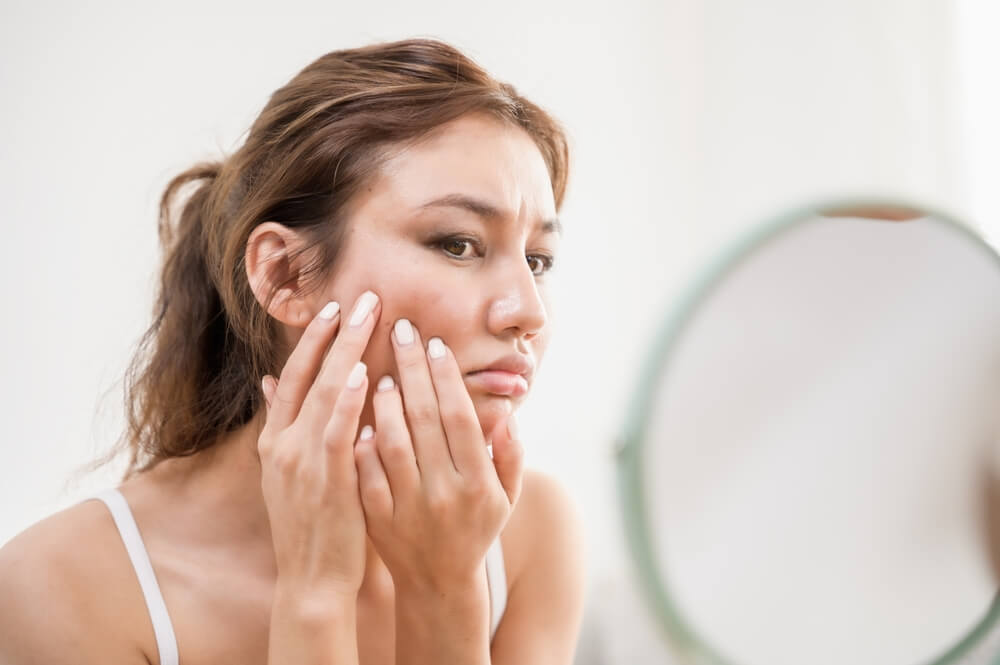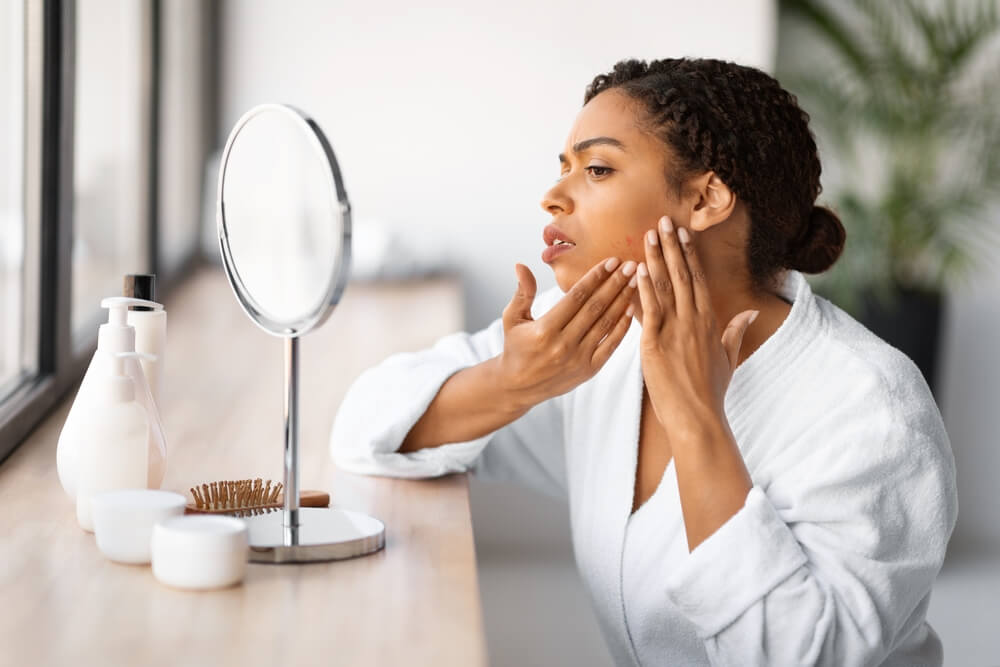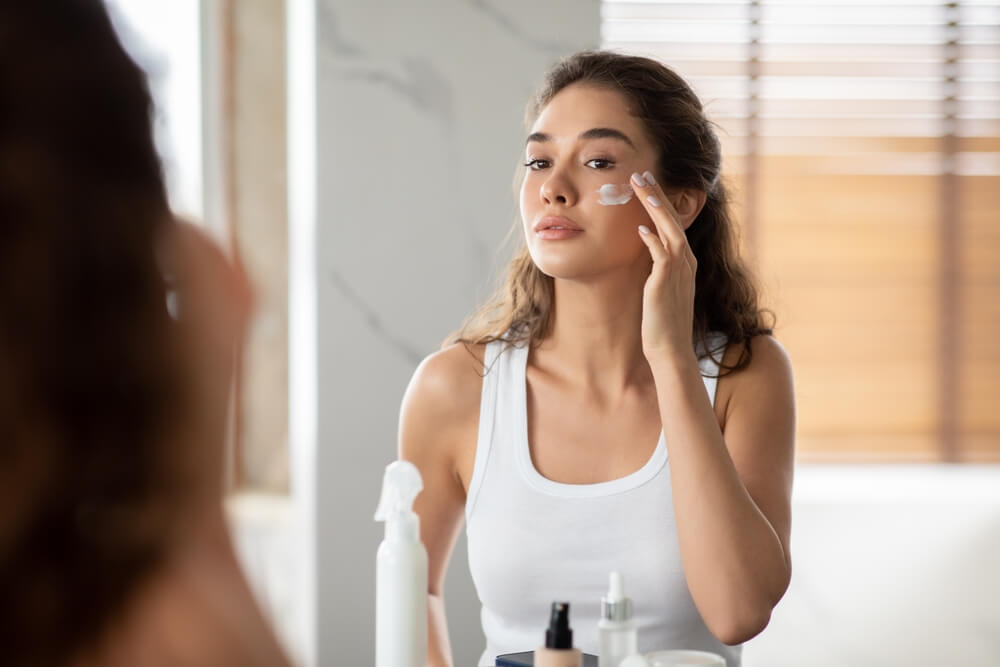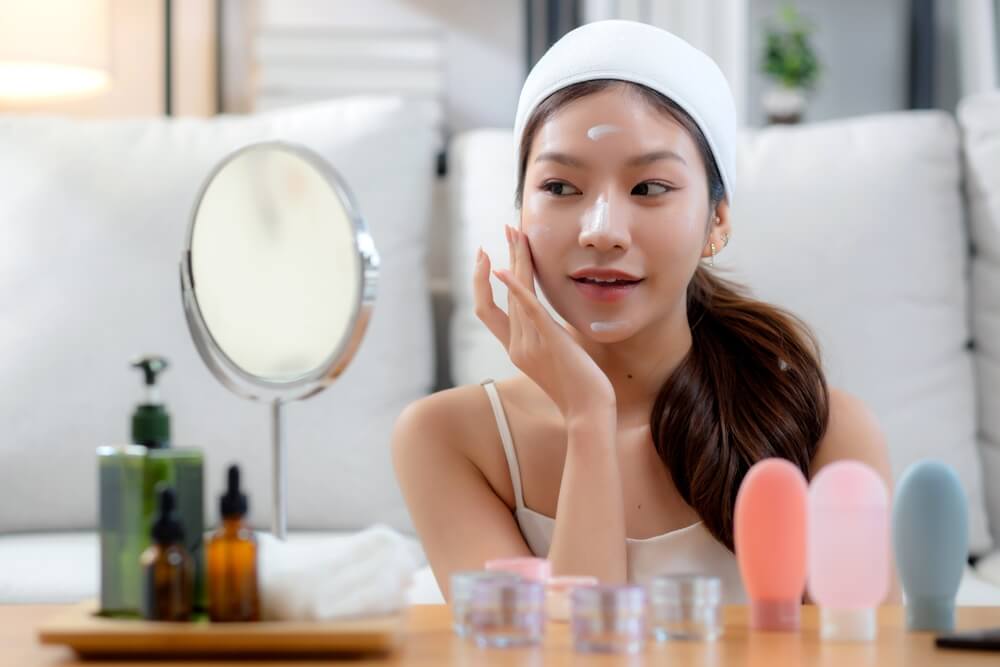
It’s very common to see your skin change in unexpected ways when starting prescription-strength ingredients. Early flare-ups can happen with proven actives, whether you’re targeting acne, pigmentation, rosacea, or dullness. This is known as ‘skin purging’ and often causes unnecessary worry - but it doesn’t mean the treatment isn’t working.
In this blog, we’ll explain the science behind skin purging, what to expect, and how to identify the difference between normal purging and a true reaction.
What is Skin Purging?
Skin purging is a temporary reaction that happens when an active ingredient speeds up your skin’s natural cell turnover. As old micro-comedones rise to the surface, the skin may look bumpier or more congested before it clears.
Purging is a short-term response to increased cell turnover – it's not a sign your skin is damaged or reacting. It’s important to know that purging only happens with ingredients that directly affect cell turnover, which is why it’s most common with prescription skincare rather than over-the-counter products.
.jpg)
Why Purging Happens With Prescription Actives
Prescription ingredients work at a deeper level than anything you can buy on the high street. That’s why the results are stronger and why the adjustment phase can be more noticeable. Let’s take a look at some common active ingredients and the short-term changes they may cause to help clear your skin from the inside out:
Tretinoin:
Tretinoin quickly increases cell turnover, bringing congestion to the surface before it clears.
Clindamycin:
Clindamycin targets acne-causing bacteria, sometimes revealing deeper inflammation before calming it.
Niacinamide:
Niacinamide supports barrier repair, but early changes in redness or texture are normal as your skin adapts.
Hydroquinone:
Hydroquinone may cause temporary dryness as your skin adjusts, especially in gentle UK melasma cream formulations.
With any of these effects, your skin isn’t getting worse. It’s adjusting to treatment that works at a medical level – and that’s a good thing.

What’s Normal and What Isn’t?
Normal signs of purging:
- Breakouts in areas you usually get spots
- Mild dryness, flaking, or tightness
- Slight redness
- Rough texture
- Lasts 2–6 weeks
Warning signs it’s NOT purging:
- Breakouts in new areas
- Burning, stinging, or swelling
- Cracked or painful skin
- Worsening pigmentation
- No improvement after 6–8 weeks

How to Safely Navigate the Skin Purging Phase
A gentle, consistent routine can make the early adjustment period far easier on your skin. It helps to start using your prescription treatment slowly, every other night during the first week so your skin has time to adapt. Applying a moisturiser before your active ingredient can also soften the initial dryness or tightness that tretinoin or other prescription actives sometimes cause.
Keep the rest of your skincare routine simple – a cleanser, moisturiser, and daily SPF are all you need at this stage. Additionally, it’s always best to avoid exfoliants or other strong actives for the first few weeks, as they can sometimes add unnecessary irritation.

So, Should Your Skin Get Worse Before It Gets Better?
Sometimes, yes. But only briefly, and only with the right ingredients. Purging is a sign of accelerated cell turnover, not skin damage. With the correct guidance, you can expect any skin purging to be manageable, predictable, and temporary.
Here at MiQuest, you never have to navigate the purging phase alone. We deliver hyper-personalised prescription skincare that evolves with your progress, designed by our real clinical experts and supported by our UKCA-certified AI Medical Device. If any purging becomes uncomfortable or confusing, our experts quickly step in to guide you, fine-tune your prescription, and keep your skin on the right track.
Discover what our custom prescription skincare can do for you – start your consultation today.






AI-Empowered Dermatology, Personalised For You.






